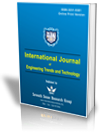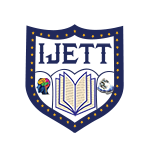Proposal of a Web Design for Students with Dyslexia Problems in the English Course
Proposal of a Web Design for Students with Dyslexia Problems in the English Course |
||
 |
 |
|
| © 2025 by IJETT Journal | ||
| Volume-73 Issue-11 |
||
| Year of Publication : 2025 | ||
| Author : Laberiano Andrade-Arenas, Margarita Giraldo Retuerto, Gustavo Villar-Mayuntupa | ||
| DOI : 10.14445/22315381/IJETT-V73I11P103 | ||
How to Cite?
Laberiano Andrade-Arenas, Margarita Giraldo Retuerto, Gustavo Villar-Mayuntupa,"Proposal of a Web Design for Students with Dyslexia Problems in the English Course", International Journal of Engineering Trends and Technology, vol. 73, no. 11, pp.27-38, 2025. Crossref, https://doi.org/10.14445/22315381/IJETT-V73I11P103
Abstract
The capacity to read, write, and speak words correctly is the main symptom of dyslexia. This learning disorder has a detrimental effect on academic performance, particularly in rural areas where identification is scarce. Due to the frequent impact on phonological and visual abilities, which are often compromised in these pupils, this condition presents an additional challenge when learning English. Despite their widespread use, there are few digital resources created especially to meet their needs. Thus, the objective is to create and demonstrate a prototype web application that helps dyslexic students learn English inclusively and efficiently by giving them access to individualized learning resources and encouraging their motivation throughout the process. Through teacher interviews and parent surveys, the Design Thinking technique was used to collect the required data. From these data, a semantic map was constructed that allowed the identification of five types of dyslexia: phonological, superficial, mixed, visual, and developmental. Among the results, it was found that developmental dyslexia was the most frequently mentioned (17 mentions), indicating a close relationship with students' demotivation. In addition, a web prototype was developed that includes activities focused on phonological and visual awareness, such as word formation, games, and visual resources. This work represents an initial step towards the creation of an expert system capable of recognizing the type of dyslexia of each student and adapting the teaching of English according to their specific needs. The next step is to validate the prototype in real school environments to optimize and improve its effectiveness.
Keywords
Dyslexia, Design Thinking, Educational Web Application, English Language, Learning Disabilities.
References
[1] Nilgun Degirmenci, Basak Baglama, and Yucehan Yucesoy, “The Use of Technology in Dyslexia: An Analysis of Recent Trends,” International Journal of Emerging Technologies in Learning (IJET), vol. 15, no. 05, pp. 30-39, 2020.
[CrossRef] [Google Scholar] [Publisher Link]
[2] Norah Dhafer Alqahtani, Bander Alzahrani, and Muhammad Sher Ramzan, “Deep Learning Applications for Dyslexia Prediction,” Applied Sciences, vol. 13, no. 5, pp 1-17, 2023.
[CrossRef] [Google Scholar] [Publisher Link]
[3] Angel Jaramillo-Alcázar et al., “An Approach to Accessible Serious Games for People with Dyslexia,” Sustainability, vol. 13, no. 5, pp. 1-17, 2021.
[CrossRef] [Google Scholar] [Publisher Link]
[4] Rachel Leslie et al., “The Perceptions Parents of Dyslexic Children Have on Barriers to Meaningful Parent-School Partnerships in Australia,” Exceptionality, vol. 33, no. 1, pp. 40-58, 2025.
[CrossRef] [Google Scholar] [Publisher Link]
[5] Esraa Maskati et al., “Using Virtual Reality (VR) in Teaching Students with Dyslexia,” International Journal of Emerging Technologies in Learning, vol. 16, no. 9, pp. 291-305, 2021.
[CrossRef] [Google Scholar] [Publisher Link]
[6] José Manuel Alcalde-Llergo et al., “Fostering Inclusion: A Virtual Reality Experience to Raise Awareness of Dyslexia-Related Barriers in University Settings,” Electronics, vol. 14, no. 5, pp. 1-20, 2025.
[CrossRef] [Google Scholar] [Publisher Link]
[7] Sonia Rodríguez-Cano et al., “Design of a Virtual Reality Software to Promote the Learning of Students with Dyslexia,” Sustainability, vol. 13, no. 15, pp. 1-20, 2021.
[CrossRef] [Google Scholar] [Publisher Link]
[8] M.A.P. Burac, and J. Dela Cruz, “Development and Usability Evaluation on Individualized Reading Enhancing Application for Dyslexia (IREAD): A Mobile Assistive Application,” IOP Conference Series: Materials Science and Engineering: International Conference on Information Technology and Digital Applications 2019 (ICITDA 2019), Yogyakarta, Indonesia, vol. 803, no. 1, pp. 1-8, 2020.
[CrossRef] [Google Scholar] [Publisher Link]
[9] Andres Larco et al., “Moving beyond Limitations: Designing the Helpdys App for Children with Dyslexia in Rural Areas,” Sustainability, vol. 13, no. 13, pp. 1-19, 2021.
[CrossRef] [Google Scholar] [Publisher Link]
[10] Abir Osman Elfakki, Souhir Sghaier, and Abdullah Alhumaidi Alotaibi, “An Efficient System Based on Experimental Laboratory in 3D Virtual Environment for Students with Learning Disabilities,” Electronics, vol. 12, no. 4, pp. 1-20, 2023.
[CrossRef] [Google Scholar] [Publisher Link]
[11] Juana María Anguita-Acero, Oscar Navarro-Martinez, and Lauren Rebecca Jordan, “Learning Difficulties of Students with Dyslexia in Spanish and UK Schools,” European Journal of Education, vol. 59, no. 4, pp. 1-12, 2024.
[CrossRef] [Google Scholar] [Publisher Link]
[12] Gianluca Morciano et al., “Use of Recommendation Models to Provide Support to Dyslexic Students,” Expert Systems with Applications, vol. 249, pp. 1-37, 2024.
[CrossRef] [Google Scholar] [Publisher Link]
[13] Miroslav Popov, and Tatyana Ivanova, “Knowledge Model for Developing, Searching and Using Personalized Learning Content for Learners, Having Dyslexia Disability,” CompSysTech '20: Proceedings of the 21st International Conference on Computer Systems and Technologies, Ruse Bulgaria, pp. 258-265, 2020.
[CrossRef] [Google Scholar] [Publisher Link]
[14] Weam Gaoud Alghabban, and Robert Hendley, “Adapting E-Learning to Dyslexia Type: An Experimental Study to Evaluate Learning Gain and Perceived Usability,” International Conference on Human-Computer Interaction, Copenhagen, Denmark, pp. 519-537, 2020.
[CrossRef] [Google Scholar] [Publisher Link]
[15] Sonia Rodríguez Cano et al., “Evaluation of Motivational Learning Strategies for Children with Dyslexia: A FORDYSVAR Proposal for Education and Sustainable Innovation,” Sustainability, vol. 13, no. 5, pp. 1-15, 2021.
[CrossRef] [Google Scholar] [Publisher Link]
[16] Maria Vilanova Cifre, and Lluís Barceló Coblijn, “Study of English as an Additional Language in Students with Dyslexia,” Language and Health, vol. 3, no. 1, pp. 1-8, 2025.
[CrossRef] [Google Scholar] [Publisher Link]
[17] Daniel Wessel, Ann-Kathrin Kennecke, and Moreen Heine, “WCAG and Dyslexia Improving the Search Function of Websites for Users with Dyslexia (Without Making it Worse for Everyone Else),” Proceedings of Menschund Computer 2021, Ingolstadt, Germany, pp. 168-179, 2021.
[CrossRef] [Google Scholar] [Publisher Link]
[18] Roxana Rodriguez-Goncalves et al., “Development and Feasibility Analysis of an Assistance System for High School Students with Dyslexia,” Research in Developmental Disabilities, vol. 111, 2021.
[CrossRef] [Google Scholar] [Publisher Link]
[19] Jan Auernhammer, and Bernard Roth, “The Origin and Evolution of Stanford University’s Design Thinking: from Product Design to Design Thinking in Innovation Management,” Journal of Product Innovation Management, vol. 38, no. 6, pp. 623-644, 2021.
[CrossRef] [Google Scholar] [Publisher Link]
[20] Jenny M. Lewis, Michael McGann, and Emma Blomkamp, “When Design Meets Power: Design Thinking, Public Sector Innovation and the Politics of Policymaking,” Policy & Politics, vol. 48, no. 1, pp. 111-130, 2020.
[CrossRef] [Google Scholar] [Publisher Link]
[21] Eric Knight, Jarryd Daymond, and Sotirios Paroutis, “Design-Led Strategy: How to Bring Design Thinking into the Art of Strategic Management,” California Management Review, vol. 62, no. 2, pp. 30-52, 2020.
[CrossRef] [Google Scholar] [Publisher Link]
[22] John S. Gero, and Julie Milovanovic, “A Framework for Studying Design Thinking through Measuring Designers’ Minds, Bodies and Brains,” Design Science, vol. 6, pp. 1-40, 2020.
[CrossRef] [Google Scholar] [Publisher Link]
[23] Claudio Dell'Era et al., “Four Kinds of Design Thinking: from Ideating to Making, Engaging, and Criticizing,” Creativity and Innovation Management, vol. 29, no. 2, pp. 324-344, 2020.
[CrossRef] [Google Scholar] [Publisher Link]
[24] R. Rajesh, and Honeymol Sunney, “Assessment on Prevalence and Risk Factors of Dyslexia among Primary School Students,” Indian Journal of Psychiatric Nursing, vol. 18, no. 2, pp. 85-89, 2021.
[CrossRef] [Google Scholar] [Publisher Link]
[25] Cheryl Nakata, and Jiyoung Hwang, “Design Thinking for Innovation: Composition, Consequence, and Contingency,” Journal of Business Research, vol. 118, pp. 117-128, 2020.
[CrossRef] [Google Scholar] [Publisher Link]

